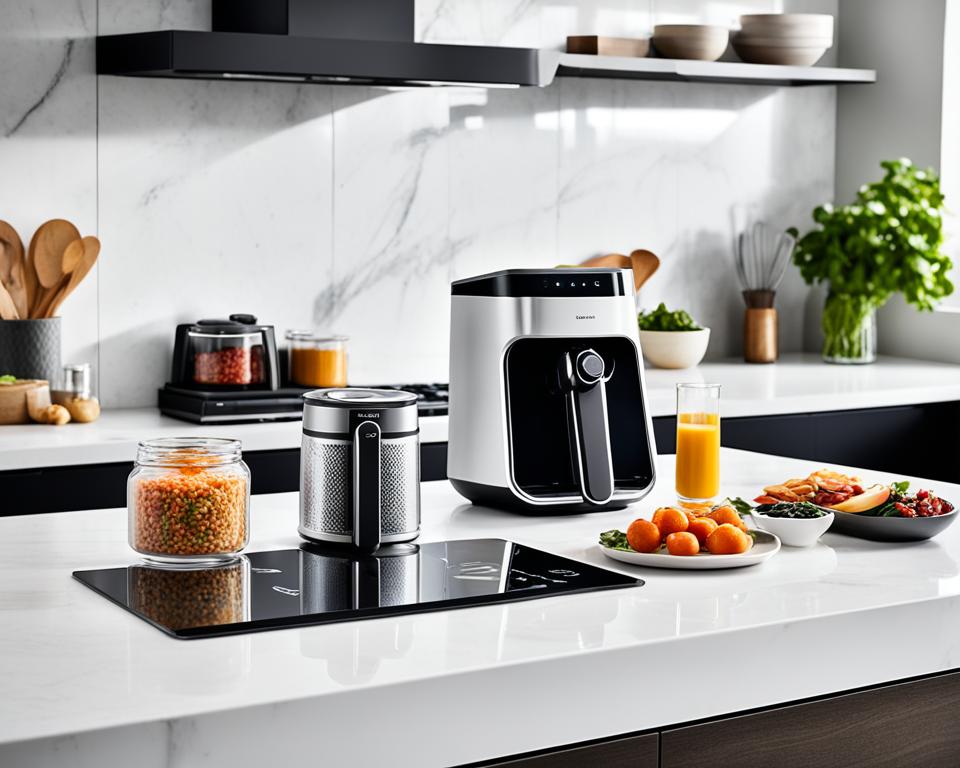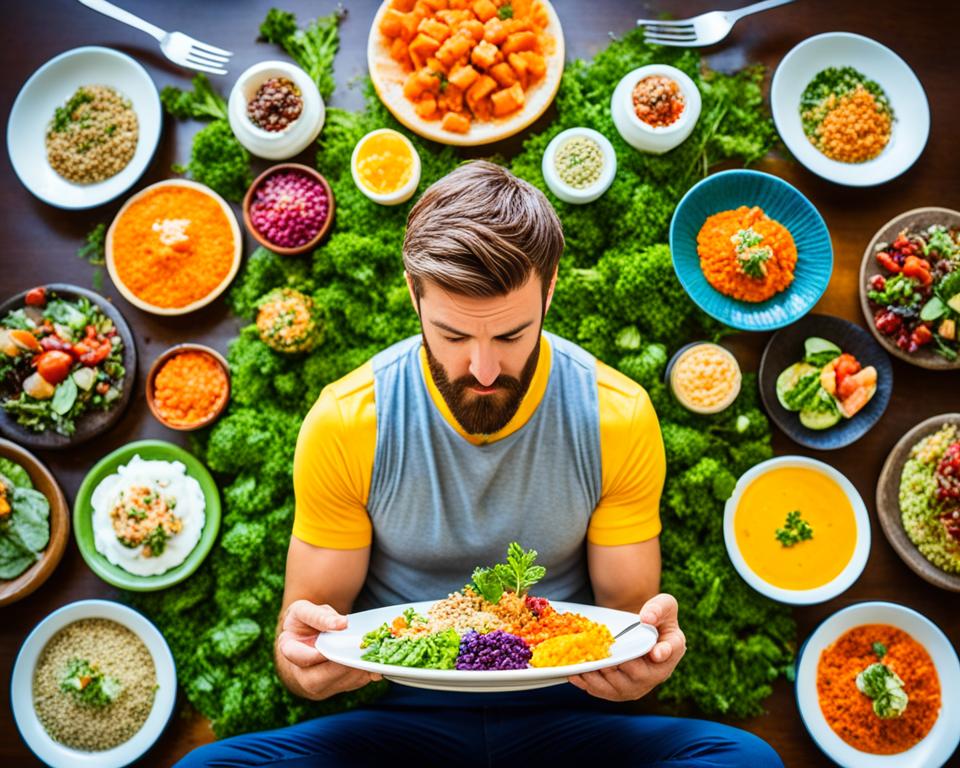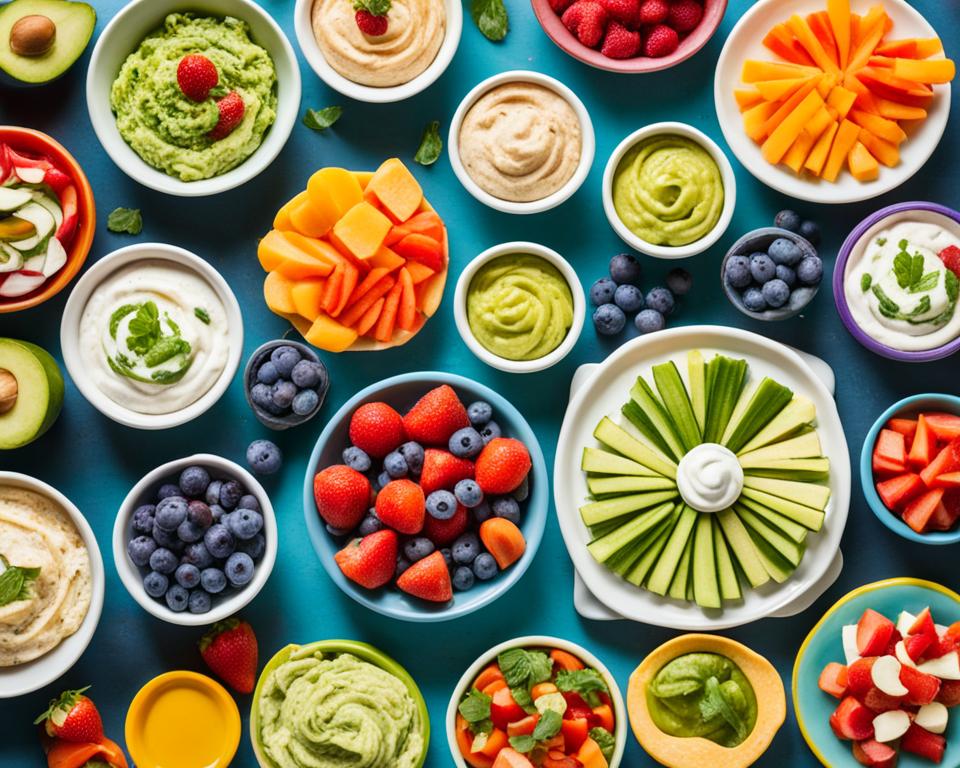Looking for a cheap and protein-rich food option? Look no further than beans and legumes! These humble legumes are not only affordable but also packed with nutrients, making them a fantastic addition to any diet. Whether you’re a vegetarian, on a budget, or simply looking to incorporate more plant-based protein into your meals, beans and legumes are a great choice.
But how can you easily incorporate more of these nutritious powerhouses into your cooking? With a little creativity, the possibilities are endless. From adding them to salads and sandwiches to using them in soups and stews, there are countless ways to enjoy the protein-rich benefits of beans and legumes without breaking the bank.
With their versatility and wide range of flavors and textures, beans and legumes can be used in a variety of dishes. From classic chili made with kidney beans to a colorful chickpea salad, incorporating beans and legumes into your meals is both easy and delicious.
In this article, we will explore different ways to incorporate more beans and legumes into your cooking, discuss the health benefits of incorporating these high-protein options into your diet, and even compare the nutritional value of different types of beans. By the end, you’ll be armed with affordable legume recipes and a better understanding of the benefits of adding more beans and legumes to your meals.
Key Takeaways:
- Beans and legumes are an affordable and protein-rich food option.
- There are countless ways to incorporate beans and legumes into your cooking, from salads to soups and stews.
- Adding beans and legumes to your meals increases their nutritional value and provides essential nutrients.
- Different types of beans offer various health benefits and can be chosen based on personal preference and desired flavors.
- Eat More Beans is a company that offers convenient and delicious steamed bean products to make incorporating them into your diet even easier.
12 Ways to Eat More Beans & Lentils
Looking for easy and affordable ways to incorporate beans and lentils into your meals? You’ve come to the right place! Whether you’re a seasoned bean lover or just starting to explore the world of legumes, there are countless delicious recipes and creative ways to enjoy these protein-packed superfoods.
1. Add Beans to Salads
Enhance your salads with a healthy dose of beans. From chickpeas in a Greek salad to black beans in a Mexican-inspired bowl, legumes add texture, flavor, and protein to any leafy dish.
2. Make Flavorful Bean Dip
Create a tasty and nutritious bean dip by blending cooked beans with garlic, lemon juice, and your favorite herbs and spices. Serve with fresh vegetables or whole grain crackers for a satisfying snack.
3. Try Roasted Chickpeas
Roasted chickpeas are a crunchy and flavorful snack. Toss them in olive oil, sprinkle with your desired seasonings, and bake until crispy. They’re perfect for munching on the go or sprinkling over salads and soups.
4. Top Your Toast
Instead of traditional spreads, use mashed beans or lentils as a nutritious and protein-rich topping for your toast. Add avocado, sliced tomatoes, or a sprinkle of cheese for extra flavor.
5. Blend Beans Into Smoothies
Add a protein boost to your morning smoothie by blending in cooked and cooled beans. They add creaminess and a subtle nutty flavor, making your smoothie more filling and satisfying.
6. Make Hearty Bean Soups
Beans and lentils are excellent additions to homemade soups. Whether it’s a classic minestrone or a spicy lentil curry, these legumes add heartiness and depth of flavor to your favorite soups.
7. Create Colorful Bean Tacos
Swap out the meat for beans in your next taco night. Whether it’s refried beans, black beans, or pinto beans, these versatile legumes make for a delicious and protein-packed taco filling.
8. Stuff Bell Peppers with Beans
Create a nutritious and satisfying meal by stuffing bell peppers with a flavorful mixture of beans, vegetables, and whole grains. Bake until the peppers are tender and the filling is heated through.
9. Make Lentil Burgers
Make plant-based burgers using cooked lentils as the main ingredient. Mix them with breadcrumbs, herbs, and spices, and pan-fry or bake until golden and crisp. Serve on a bun with your favorite toppings.
10. Add Beans to Pasta Dishes
Enhance your pasta dishes with beans for an extra dose of protein and fiber. Toss cooked beans with your favorite pasta and sauce, and top with grated cheese and fresh herbs.
11. Whip Up a Bean Salad
Combine different types of beans with fresh vegetables, herbs, and a zesty dressing to create a vibrant and nutritious bean salad. It’s a perfect side dish or a light and satisfying main course.
12. Try Bean-Based Desserts
Yes, you can even enjoy beans in your desserts! Experiment with recipes like black bean brownies, chickpea cookies, or lentil pudding for a healthy twist on traditional sweets.
With these 12 easy ways to incorporate beans and lentils into your meals, you’ll never run out of delicious and affordable options. So go ahead, explore the world of legumes, and reap the nutritional benefits they have to offer!
Why You Should Eat More Beans
Beans are not just a pantry staple; they also offer a range of impressive health benefits. Whether you’re looking to improve your digestion, support heart health, manage blood sugar levels, or achieve healthy weight management, beans can be a valuable addition to your diet. Packed with essential nutrients like fiber and protein, beans offer a nutritious and versatile option for promoting overall well-being.
Health Benefits of Beans
When it comes to health benefits, beans have a lot to offer. Here are some reasons why you should consider incorporating more beans into your meals:
- Improved Digestion: Beans are rich in fiber, which plays a key role in promoting healthy digestion. The fiber content helps regulate bowel movements, prevents constipation, and supports a healthy gut microbiome.
- Heart Health: Eating beans regularly can have a positive impact on heart health. They have been shown to reduce cholesterol levels, lower blood pressure, and decrease the risk of developing cardiovascular diseases.
- Blood Sugar Control: Beans have a low glycemic index, meaning they don’t cause a sharp spike in blood sugar levels. This makes them a suitable choice for individuals with diabetes or those looking to manage their blood sugar levels.
- Weight Management: Incorporating beans into your diet can support weight management efforts. They are high in protein and fiber, which can help increase feelings of fullness and reduce overall calorie intake.
The Nutritional Value of Beans
One of the reasons beans are such a beneficial food is their impressive nutritional profile. Here’s a breakdown of the key nutrients found in beans:
| Nutrient | Benefits |
|---|---|
| Fiber | Supports healthy digestion, reduces cholesterol levels, and aids in weight management. |
| Protein | Essential for muscle repair and growth, provides sustained energy, and helps you feel full and satisfied. |
| Vitamins and Minerals | Beans are rich in various vitamins and minerals, including folate, iron, potassium, and magnesium, which are essential for overall health and well-being. |
| Antioxidants | Beans are packed with antioxidants that help protect the body against oxidative stress and reduce the risk of chronic diseases. |
“Incorporating more beans into your diet is a simple and affordable way to boost your nutrient intake and support your overall health.”
With their combination of health benefits and nutritional value, beans are undeniably a powerhouse food that can improve your well-being. Whether you’re looking to enhance your digestion, protect your heart, manage your blood sugar levels, or maintain a healthy weight, beans can be a valuable addition to your daily meals.
What Happens If I Eat Beans Every Day?
Eating beans every day can have numerous health benefits. The nutritional value of beans makes them a valuable addition to your daily diet. They are packed with essential nutrients like fiber, protein, and vitamins, which can contribute to various positive effects on your health.
- Increased Nutrient Intake: Incorporating beans into your daily meals can significantly boost your nutrient intake. Beans are rich in fiber, which aids in digestion, helps maintain a healthy weight, and keeps you feeling full for longer periods. Additionally, the high protein content in beans can provide a sustainable source of energy.
- Improved Gut Health: The fiber in beans acts as a prebiotic, promoting the growth of beneficial gut bacteria. This can help improve gut health, enhance digestion, and support overall digestive function. A healthy gut is crucial for optimal nutrient absorption and maintaining a strong immune system.
- Reduction in Chronic Diseases: Regular consumption of beans has been associated with a reduced risk of chronic diseases, such as heart disease, type 2 diabetes, and certain types of cancer. The combination of fiber, antioxidants, and other beneficial compounds found in beans helps protect against inflammation and oxidative stress, which are underlying factors in many chronic diseases.
Furthermore, eating beans every day can contribute to better blood sugar control. The low glycemic index of beans means they are digested and absorbed slowly, preventing rapid spikes in blood sugar levels. This is particularly beneficial for individuals with diabetes or those looking to manage their blood sugar levels effectively.
Overall, incorporating beans into your daily diet can have a positive impact on your health. They offer a range of nutritional benefits, contribute to increased nutrient intake, improve gut health, and reduce the risk of chronic diseases. So go ahead and add beans to your meals for a delicious and nutritious addition to your diet!
The Nutritional Benefits of Beans:
| Benefit | Description |
|---|---|
| Fiber | Helps with digestion, weight management, and blood sugar control. |
| Protein | Provides essential amino acids and supports muscle growth and repair. |
| Vitamins and Minerals | Rich in nutrients like folate, iron, potassium, and magnesium. |
| Antioxidants | Protect cells from damage and reduce the risk of chronic diseases. |
Does Your Body Get Used to Beans?
While beans can cause gas and flatulence in some individuals, there are strategies to minimize these effects. Soaking beans before cooking and gradually increasing your intake can help your body adjust to the fiber content and reduce digestive issues. It’s important to note that everyone’s body is different, and what works for one person may not work for another.
“Soaking beans before cooking and gradually increasing your intake can help your body adjust to the fiber content and reduce digestive issues.”
When it comes to eating beans, digestion is a common concern. The high fiber content in beans can sometimes cause bloating, gas, and discomfort. However, this doesn’t mean you have to give up on enjoying the nutritional benefits of beans. With a few simple adjustments, you can help your body adjust and minimize these digestive issues.
Soaking Beans for Improved Digestion
One effective strategy to aid digestion of beans is to soak them before cooking. Soaking beans helps to break down some of the indigestible sugars and compounds that can cause gas. It also softens the beans, reducing cooking time and making them easier to digest.
To soak beans, follow these steps:
- Place the beans in a large bowl and cover them with enough water to fully submerge them.
- Leave them to soak for at least 6-8 hours or overnight.
- After soaking, drain the beans and discard the soaking water.
By soaking beans before cooking, you can make them more digestible and minimize the likelihood of gas and bloating.
Gradually Increasing Bean Intake
If you’re new to incorporating beans into your diet, it’s best to gradually increase your intake. Start by consuming smaller portions of beans and gradually increase the amount over time. This allows your body to adjust to the higher fiber content and reduces the likelihood of digestive discomfort.
Additionally, try pairing beans with other easily digestible foods, such as vegetables or lean proteins. This can help balance the overall fiber content of your meals and make them easier to digest.
Listening to Your Body
It’s important to listen to your body and pay attention to how it reacts to different foods. While beans are a nutritious and beneficial food, they may not suit everyone’s digestive system. If you find that beans consistently cause discomfort or digestive issues, it may be best to reduce your intake or explore alternative protein sources.
Remember, each person’s body is unique, and finding what works best for you is key. Experiment with different cooking methods, try different types of beans, and pay attention to portion sizes to find the right balance that suits your digestive system.

| Type of Bean | Digestibility Level |
|---|---|
| Black Beans | Medium |
| Pinto Beans | High |
| Chickpeas | Medium |
| Lentils | Low |
| Red Beans | Medium |
Comparing Bean Types for the Healthiest Option
Different types of beans offer varying degrees of nutritional value, but all beans are generally healthy choices. Some of the healthiest options include chickpeas, lentils, black beans, kidney beans, and pinto beans. These beans are rich in protein, fiber, and essential nutrients. The best choice of beans depends on personal preference and the desired flavor and texture for your recipes.
Comparing the Nutritional Value of Different Beans
| Bean Type | Protein Content | Fiber Content | Additional Nutrients |
|---|---|---|---|
| Chickpeas | 15 grams per cup | 12 grams per cup | Iron, folate, manganese |
| Lentils | 18 grams per cup | 16 grams per cup | Folate, magnesium, potassium |
| Black Beans | 15 grams per cup | 15 grams per cup | Folate, iron, magnesium |
| Kidney Beans | 15 grams per cup | 11 grams per cup | Iron, potassium, vitamin K |
| Pinto Beans | 15 grams per cup | 15 grams per cup | Folate, magnesium, phosphorus |
As the table illustrates, chickpeas, lentils, black beans, kidney beans, and pinto beans are all protein-rich and fiber-rich options. They also provide additional essential nutrients that contribute to overall health. Choosing among these beans comes down to personal preference and the specific nutritional profile you’re looking for in your meals.
Remember, incorporating different types of beans in your diet ensures a diverse range of nutrients and flavors, enhancing the overall nutritional value of your meals.
Introducing Eat More Beans
Eat More Beans is a company dedicated to providing nutritious steamed beans that are easy to incorporate into your daily diet. We aim to promote increased bean consumption for improved health and well-being. Our range of products includes black bean quinoa bowls, chickpea pasta, and lentil soup, all made with high-quality ingredients. By offering convenient and delicious options, we strive to make it effortless for you to enjoy the health benefits of steamed beans.
Steamed beans not only add a nutritional boost to your meals but also offer a variety of health benefits. They are packed with protein, fiber, and essential vitamins and minerals, making them an excellent choice for those seeking a nutritious and balanced diet. Incorporating more steamed beans into your meals can improve digestion, promote heart health, regulate blood sugar levels, and support weight management.
At Eat More Beans, we understand the importance of convenience and taste when it comes to maintaining a healthy lifestyle. That’s why our range of products is designed to be easy to prepare, flavorful, and satisfying. Whether you’re a busy professional or a health-conscious individual, our steamed bean products offer a convenient solution for incorporating this nutritious food into your daily routine.
Our commitment to quality and nutrition is reflected in our sourcing and manufacturing processes. We carefully select the finest ingredients and use innovative steaming techniques to preserve the freshness, flavor, and nutritional value of the beans. This ensures that you can enjoy the full health benefits of steamed beans in every bite.
With Eat More Beans, increasing your bean consumption has never been easier. Simply incorporate our steamed bean products into your favorite recipes, or enjoy them as standalone meals. Whether you’re looking for a quick lunch option or a nutritious dinner, our range of products offers versatility and convenience.
Join us in embracing a healthier lifestyle by incorporating more steamed beans into your diet. Discover the taste, convenience, and health benefits of Eat More Beans products today.
The Nutritional Value of Steamed Beans
Steamed beans are not only delicious but also highly nutritious. They are packed with essential vitamins, minerals, fiber, and protein, making them an excellent addition to a well-balanced diet. Here is a breakdown of the nutritional content in 100 grams of steamed beans:
| Nutrient | Amount |
|---|---|
| Protein | 7 grams |
| Fiber | 6 grams |
| Iron | 1.5 milligrams |
| Vitamin C | 9 milligrams |
| Potassium | 235 milligrams |
As you can see, steamed beans are a nutrient-rich food that can contribute to overall health and well-being. They are low in fat and cholesterol-free, making them an excellent choice for those looking to maintain a healthy weight and cardiovascular health.
We believe that incorporating more steamed beans into your diet is a simple and effective way to nourish your body and improve your overall health. With our range of convenient and delicious products, you can effortlessly increase your bean consumption and reap the benefits of this nutritious food.
Conclusion
Incorporating more beans and legumes into our cooking provides a cost-effective way to add protein and nutrients to our meals. Beans and legumes offer a wide variety of options and versatile recipes, allowing us to enjoy the health benefits while sticking to a budget. Whether we add them to salads, soups, or main dishes, beans and legumes provide endless possibilities for creating delicious and affordable meals.
Adding beans and legumes to our diet not only helps us meet our protein requirements, but also delivers essential nutrients like fiber and vitamins. They are a nutritious choice for individuals seeking protein-rich meal options. By exploring new recipes, we can discover creative and affordable ways to incorporate more beans and legumes into our cooking.
So, let’s start embracing the benefits of beans and legumes in our everyday cooking. With their abundance, affordability, and versatility, we can enjoy a range of affordable and nutritious recipes. From hearty bean soups to satisfying lentil salads, the incorporation of beans and legumes will enhance both our health and our palate.
FAQ
How can I incorporate more beans and legumes into my cooking for a cheap, protein-rich option?
There are numerous ways to incorporate more beans and lentils into your meals without much effort. From adding them to salads and sandwiches to using them in soups and stews, there are endless possibilities for incorporating these protein-rich foods into your diet. By experimenting with different types of beans and lentils, you can find new and delicious recipes to enjoy.
What are some easy ways to eat more beans and lentils?
Some easy ways to eat more beans and lentils include adding them to salads, using them in chili or curry dishes, making bean burgers or falafel, and including them in casseroles or stir-fries. There are countless recipes available online that feature beans and lentils as the main ingredient or a nutritious addition to your meal.
Why should I eat more beans?
Beans offer a range of health benefits, including improved digestion, reduced risk of chronic diseases like heart disease and type 2 diabetes, and weight management. They are also packed with essential nutrients like fiber and protein. Incorporating more beans into your diet can help support overall health and well-being.
What happens if I eat beans every day?
Eating beans every day can lead to numerous health benefits. Due to their high nutrient content, including fiber, protein, and vitamins, beans can contribute to improved digestion, increased nutrient intake, and reduced risk of chronic diseases. Additionally, beans can help regulate blood sugar levels and promote a healthy gut.
Does your body get used to beans?
While beans can cause gas and flatulence in some individuals, there are strategies to minimize these effects. Soaking beans before cooking and gradually increasing your intake can help your body adjust to the fiber content and reduce digestive issues. It’s important to note that everyone’s body is different, and what works for one person may not work for another.
Which types of beans are the healthiest?
Different types of beans offer varying degrees of nutritional value, but all beans are generally healthy choices. Some of the healthiest options include chickpeas, lentils, black beans, kidney beans, and pinto beans. These beans are rich in protein, fiber, and essential nutrients. The best choice of beans depends on personal preference and the desired flavor and texture for your recipes.
What is Eat More Beans?
Eat More Beans is a company that specializes in providing nutritious steamed beans, making it easier to incorporate them into your daily diet. By offering convenient and delicious products, they are promoting increased bean consumption for improved health and well-being. Their range of products includes black bean quinoa bowls, chickpea pasta, and lentil soup, all made with high-quality ingredients.
How can I create affordable and nutritious meals with beans and legumes?
Incorporating more beans and legumes into your cooking is a cost-effective way to add protein and nutrients to your meals. With a wide variety of options and versatile recipes, you can enjoy the health benefits of beans while sticking to a budget. Whether you’re adding them to salads, soups, or main dishes, beans and legumes offer endless possibilities for nutritious and affordable meals. So start exploring new recipes and enjoy the benefits of incorporating more beans and legumes into your cooking.





